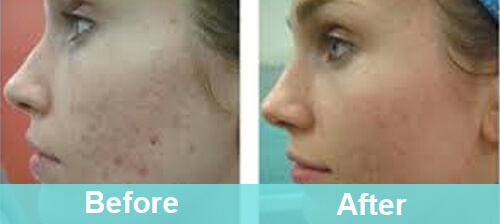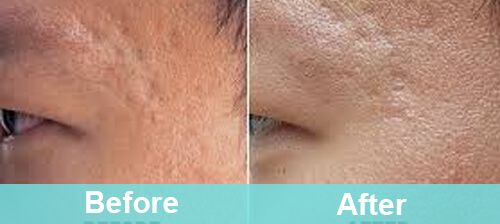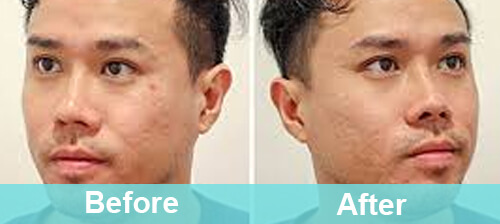Laser Treatment For Acne Scars
Acne can cause a lot of physical and psychological trauma. Someone who suffers from this condition may feel self-conscious. Pimples can drive down self-confidence, causing some patients to retreat from social situations. And even when it is successfully treated acne can leave some scars that can mar your appearance and cause further insecurities. When not treated properly, pimples may come back even worse than before. This is why it’s important that you find a professional ablative co2 fractional laser machine to treat acne scar.
Laser treatment for scars reduces the appearance of scars. It uses focused light therapy to either remove the outer layer of the skin’s surface or stimulate the production of new skin cells to cover damaged skin cells.
Laser treatment for scars can reduce the appearance of warts, skin wrinkles, age spots, scars, and keloids. It doesn’t completely remove a scar.
About safety:
This procedure requires a topical anesthetic to numb the skin. Sometimes sedation is needed.
Laster treatment for scars is an outpatient procedure. It should only be performed by a board-certified dermatologist.
Mild side effects of the procedure include pain, swelling, redness, and temporary oozing. These effects usually disappear in a couple of days.
Convenience
There’s no long downtime with this procedure. You can expect healing in about 3 to 10 days.
Cost
The cost of laser treatment for scars varies. It can range from $200 to $3,400, depending on the size of the scar and the extent of the treatment.
- The cost of your treatment will depend on several factors, including:
- the number of scars you’re treating
- the size of the area being targeted for treatment
- the number of treatments you’ll need
- the experience level of your provider
This treatment doesn’t require recovery downtime. You can plan to be back to work after a day or two.
You might want to consult with a few different providers before you decide on one to perform your laser treatment. Some doctors will charge a consultation fee to take a look at your skin and recommend a treatment plan.

The Wonders of Laser Therapy for Acne Treatment
With laser therapy, a dermatologist can help treat your acne, prevent scarring, or remove scars that might already be present from previous breakouts. All medical therapies and laser techniques to treat acne and scarring are non-invasive. Dermatologists often start by finding out the cause of acne before recommending a treatment. The goal is to determine the best treatment path, prevent recurrence, and ensure minimal to no scarring. A hormonal evaluation might be conducted in severe acne cases.
Non-ablative and ablative lasers can remove deeply rooted acne scars and encourage the formation of new collagen. Laser treatment is effective to get rid of scarring and minimise inflammation. Acne prone areas and inflamed parts of the skin are targeted in laser acne treatment to allow intense light to reach the dermal layer. This way, the laser can effectively target hyperactive sebaceous glands and initiate the healing of dermal collagen.
Bacteria in acne tend to destroy collagen in the skin. Laser treatment can help reconstruct damaged collagen fibres to repair the condition of the skin, especially if it has been scarred by acne. Some of the best dermatologists use fractional carbon dioxide ablative lasers with certain medications to remove acne scars. This treatment requires only a few sessions to complete, depending on the severity of your acne and the scarring.
How it works?
Laser treatment for acne scarring works in two ways.
First, heat from the laser works to remove the top layer of your skin where a scar has formed. As this top layer of your scar peels off, your skin appears smoother, and the appearance of the scar is less noticeable.
As the scar tissue breaks apart, heat and light from the laser also encourage new, healthy skin cells to grow. Blood flow is drawn to the area by the heat of the laser, and inflammation is reduced as blood vessels in the scar are targeted.
All of this combines to make scars look less raised and red, giving them a smaller appearance. It also promotes the healing of your skin.
Laser treatment for scars
Laser therapy uses focused beams of light to treat damaged areas on the body. It can remove tumors and other growths, improve vision, stop hair loss, and treat pain. Laser therapy can also improve the appearance of scars.
Laser treatment for scars is an outpatient procedure. Your doctor repeatedly moves a laser wand over your skin to remove damaged skin cells and diminish scars. These include:
- injury scars
- burn marks
- acne scars
- dark spots, age spots, and other types of hyperpigmentation
Because this procedure involves heat and light, your doctor may not recommend it if you have light sensitivity. Certain medications can cause this type of sensitivity. Be sure to speak with your doctor to see if you’re a good candidate.
Your doctor may also discourage laser treatments if you take blood-thinning medications due to the risk of bleeding.
They may also discourage laser treatments if you have:
- active acne
- skin sores
- darker skin
Ablative laser resurfacing
Ablative resurfacing uses an erbium YAG or carbon dioxide CO2 laser. This kind of laser treatment aims to remove the entire top layer of your skin in the area where you have scarring. It can take 3 to 10 days before the redness from ablative lasers begins to subside.
Non-ablative laser resurfacing
This type of laser treatment for acne scars uses infrared lasers. The heat from these types of lasers is meant to stimulate collagen production and encourage new cell growth to replace damaged, scarred tissue.
Risks and side effects
There are some risks and side effects when you use lasers to treat your acne scars. These side effects will vary according to what kind of laser is used, your skin type, and how many treatments you need.
Typical side effects may include:
- swelling
- redness
- pain at the site of treatment
Pain from laser treatment for acne scars is usually gone after an hour or two. Redness may take up to 10 days to subside.
Risks of using laser treatment to lessen the appearance of acne scarring include hyperpigmentation and infection. While these conditions are rare and often preventable, it’s important to speak to your doctor about your risk factors before you decide to go ahead with treatment.
If you notice pus, extensive swelling, or fever after laser treatment for acne scarring, you’ll need to speak to your provider right away.
What to expect?
It’s important to have realistic expectations going into any cosmetic procedure. Remember that laser treatment won’t take away your acne scars completely. In the best-case scenario, your scars will be far less noticeable, but there’s really no way to know how well it’ll work for you.
After laser treatment, you’ll need to be extra vigilant about your skin care in the weeks and months to come. Your skin will be more vulnerable to damage from the sun, so applying sunscreen before you leave the house is a must.
You’ll also need to avoid tanning or other activities that lead to extensive sun exposure for 6 to 8 weeks.
Your doctor may also give you special skin care instructions, such as a using a special toner or moisturizer, to help maximize the effects of your treatment.
You’ll need to keep the treated area clean to prevent infection, and your skin might have residual redness for days or even weeks. You may also need to avoid wearing makeup for a week or more, until the risk of complications has passed.
The results of your treatment won’t be visible right away. Within 7 to 10 days, you’ll start to see how well the treatment worked to reduce the appearance of acne scars. Results of this treatment are permanent.
Before and after pictures of laser treatment for scars



